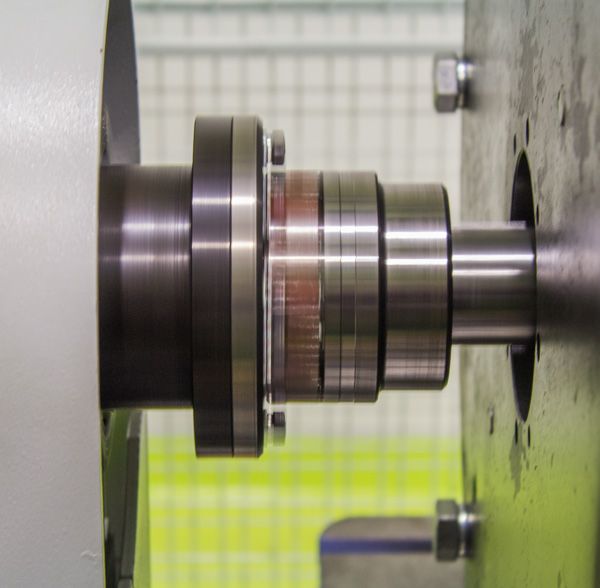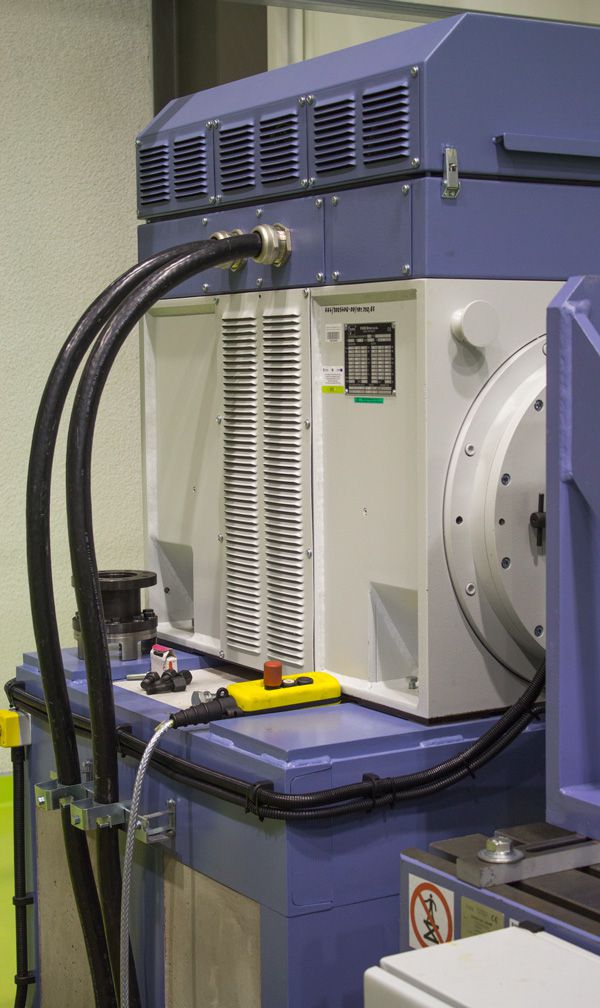Electromechanical test bench
Electromechanical test bench
Description
A station for the production of braking couple and torque of electric machines and other rotating machines, adapted to high-precision measurement of torque and rotation speed.
The unit for testing horizontal shaft machines with a power of 200 kW and rotation speed up to 6000 revolutions/min., and vertical shaft machines with a power of a 80 kW and rotation speed of up to 1500 revolutions/ min.
The test bench is adjusted to testing horizontal shaft machines with a maximum shaft height of 355 mm, and maximum weight of 2400 kg – both flange mounted motors and foot mounted motors (possibility to place the motors on a workbench with a size of 1200 x 1200 mm).


Intended useIntended use
- Tests and assays of electric engines / drives, generators, pumps, hydraulic motors, brakes, mechanical transmissions and other rotating machines
- Determination of the moment of inertia of rotatingmachines
- Acquisition of measurement data for mechanicaland electrical values of the tested rotating machines
- Diagnostics of electrical machines
- Electric machine efficiency tests in line withPN-EN 60034-2-1:2015-01 standard
- Tests for compliance with the Machinery Directive No 2006/42/EC
The power supply of the tested machines
Alternating current machines (AC)
- Closed-circuit voltage up to 500 V
- Closed-circuit current up to 400 A
Frequency 10-62 HzDirect current machines (DC)
- Closed-circuit voltage up to 440 V
- Closed-circuit current up to 300 A
Controlled electrical load
- Active power up to 200 kW
- Reactive power (inductive and capacitive) up to 200 kVar
- Possibility of short-term overload up to 140% of the power rating of the test bench
Accompanying services
- Testing the control systems of power units (converters/ electric machines)
- Measurements of noise and vibration levels of rotating machines at variousload stages
- Measurement of the insulation condition of electric machines
- Determining heating curves of electric machines
- Design of electric machines (motors, generators)and power units
- Design of electronic power converters and controls

Measurement ranges
- Rotation speed up to 6000 revolutions /min., with an accuracy ±0.1 revolutions/ min.
- Motor torque up to 200 Nm, with an accuracy of ±0,1 Nm
- AC/DC voltage up to 1 kV
- AC/DC current up to 3 kA
Additional possibilities
Tests of integration of motors and generators with electric power systems (operation in a synchronous grid, operation in autonomous/ stand-alone systems)
Shaping the assigned drive characteristic of the test bench – emulation of various types of mechanical drive loads (pumps, ventilators, lifts, vehicles and others)
Possibility to test low-speed machines by applying a reduction gear


